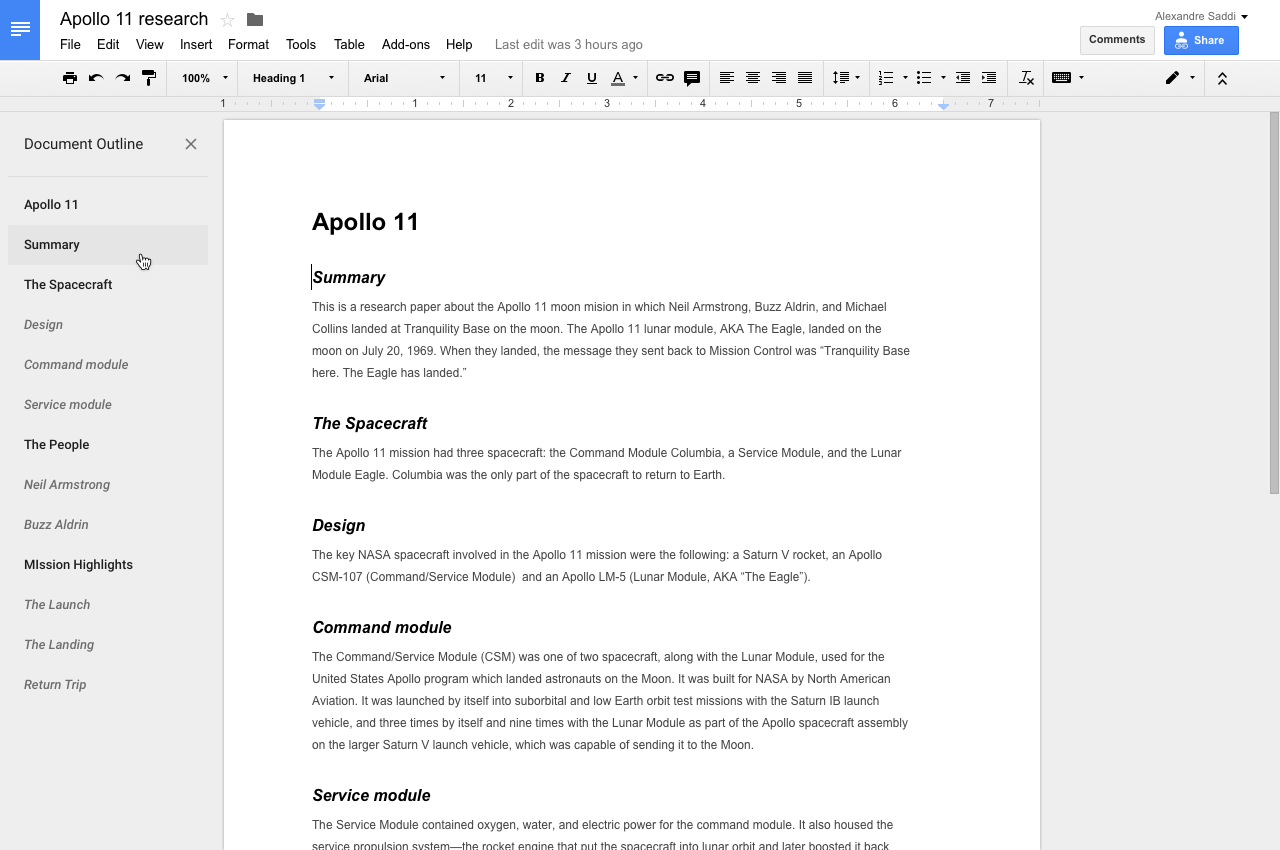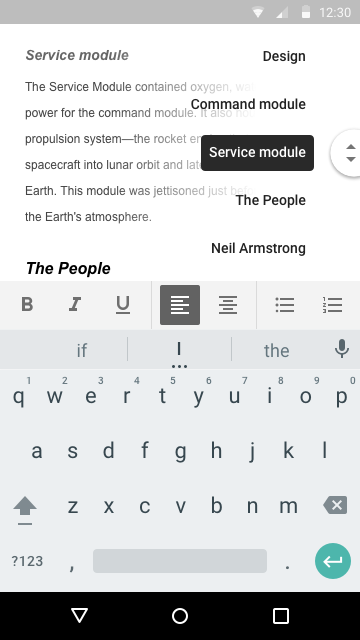Navigate documents quickly and easily with the outline tool in Google Docs
Wednesday, March 9, 2016
It can be difficult, not to mention time-consuming, to navigate lengthy, complex documents. To make that process easier, today we’re launching an outline tool in Google Docs on the web and Android. Displayed in a pane to the left of the page, this outline features headers for each section of your document, making it simple to quickly jump from section to section. If you haven’t manually applied headers, no worries—we’ll do it for you, intelligently detecting the logical divisions within your work. You can then edit or remove these headers as necessary.

This launch will also allow you to move through documents on your Android phone or tablet at super speeds. When you begin scrolling on your mobile device, a small navigation handle will automatically appear. Touching that handle will display the entire document’s structure, allowing you quickly skip from section to section, instead of slowly swiping up and down.

To surface an outline in your document, simply click Tools > Document outline in Docs on your computer or select Document outline from the overflow menu on your Android device. Check out the Help Center article below for more details.
Launch Details
Release track:
Mobile features: Launching to both Rapid release and Scheduled release
Desktop features: Launching to Rapid release, with Scheduled release coming in two weeks
Rollout pace:
Full rollout (1–3 days for feature visibility)
Impact:
All end users
Action:
Change management suggested/FYI
More Information
Help Center
Note: all launches are applicable to all Google Apps editions unless otherwise noted
Launch release calendar
Launch detail categories
Get these product update alerts by email
Subscribe to the RSS feed of these updates
This launch will also allow you to move through documents on your Android phone or tablet at super speeds. When you begin scrolling on your mobile device, a small navigation handle will automatically appear. Touching that handle will display the entire document’s structure, allowing you quickly skip from section to section, instead of slowly swiping up and down.
To surface an outline in your document, simply click Tools > Document outline in Docs on your computer or select Document outline from the overflow menu on your Android device. Check out the Help Center article below for more details.
Launch Details
Release track:
Mobile features: Launching to both Rapid release and Scheduled release
Desktop features: Launching to Rapid release, with Scheduled release coming in two weeks
Rollout pace:
Full rollout (1–3 days for feature visibility)
Impact:
All end users
Action:
Change management suggested/FYI
More Information
Help Center
Note: all launches are applicable to all Google Apps editions unless otherwise noted
Launch release calendar
Launch detail categories
Get these product update alerts by email
Subscribe to the RSS feed of these updates